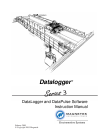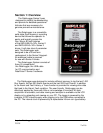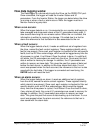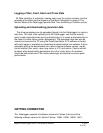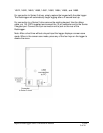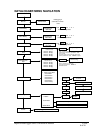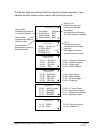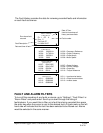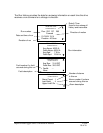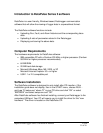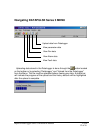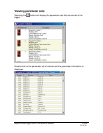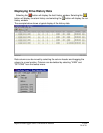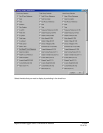
Impulse DataLogger Series 3 Instruction Manual 2/1/05
3 of 16
How data logging works:
The DataLogger is a device which polls the Drive via the RS232 CN1 port.
Once connected, the logger will read the Inverter Status and U1
parameters. From the Inverter Status, the logger can detect when the drive
is running or when a fault or alarm occurs. Note: the logger must be in
Monitor mode to log any data.
When a run occurs:
When the logger detects a run, it increments the run counter and begins to
take averages and store peak values of the U1 parameters being read. It
also records how long the run remains active. When the run is ended, this
information is written to memory for storage. If it ended due to a fault or
alarm the reference to that fault/alarm is also associated to the run.
When a fault occurs:
When the logger detects a fault, it reads an additional set of registers from
the drive, named the fault content registers. These registers identify which
fault(s) are present. Once read, each register is checked to filter out specific
faults, such as DC Bus undervoltage, which would be logged every time the
drive power is cycled, if not filtered. Once the check is done, if a valid fault
still exists, the U2 parameters are read from the drive. Once read, the fault
data is written to memory for storage. In addition, the U1 parameters are
written to memory as trace data. This gives the past five scans of data just
before the fault occurs, in addition to the drive-stored fault data. If a run
event was present when the fault occurred, the reference to that run is also
saved with the fault data. If the logger is connected and monitoring, the
ENTER button will reset the fault.
When an alarm occurs:
When the logger detects an alarm, it reads an additional set of registers
from the drive, named the alarm content registers. These registers identify
which alarm(s) are present. Once read, each register is checked to filter out
specific alarms, such as DC Bus undervoltage, which would be logged
every time the drive power is cycled, if not filtered. Once the check is done,
if any alarms still exist, the current U1 parameters are saved to memory for
storage. In addition, the U1 parameters are written to memory as trace
data. This gives the past five scans of data leading up to the alarm. If a run
event was present when the alarm occurred, the reference to that run is
also saved with the alarm data.



